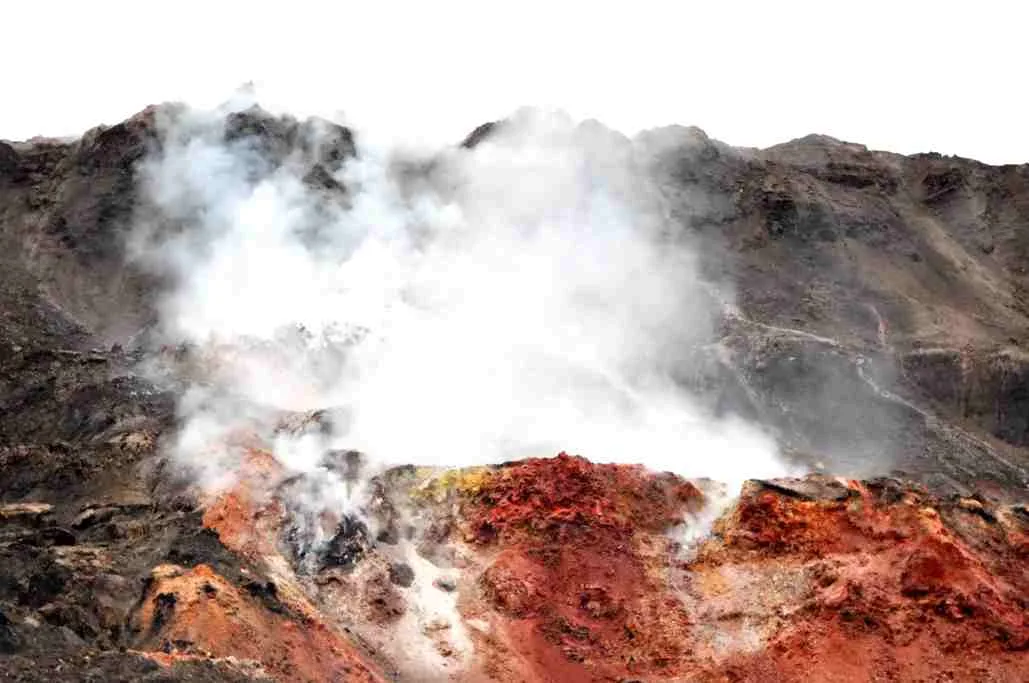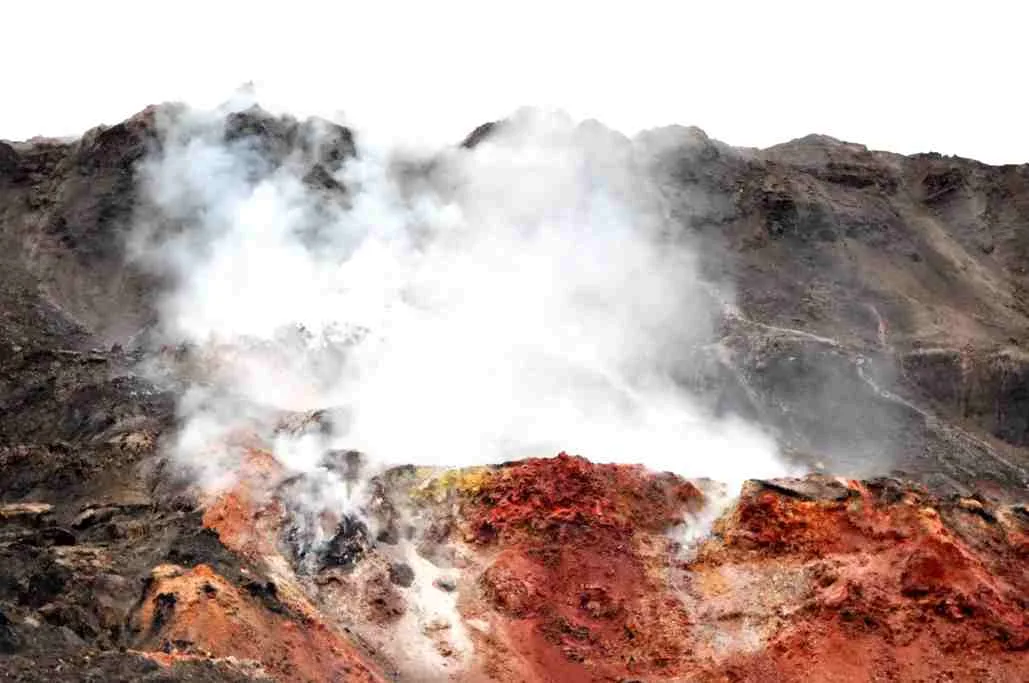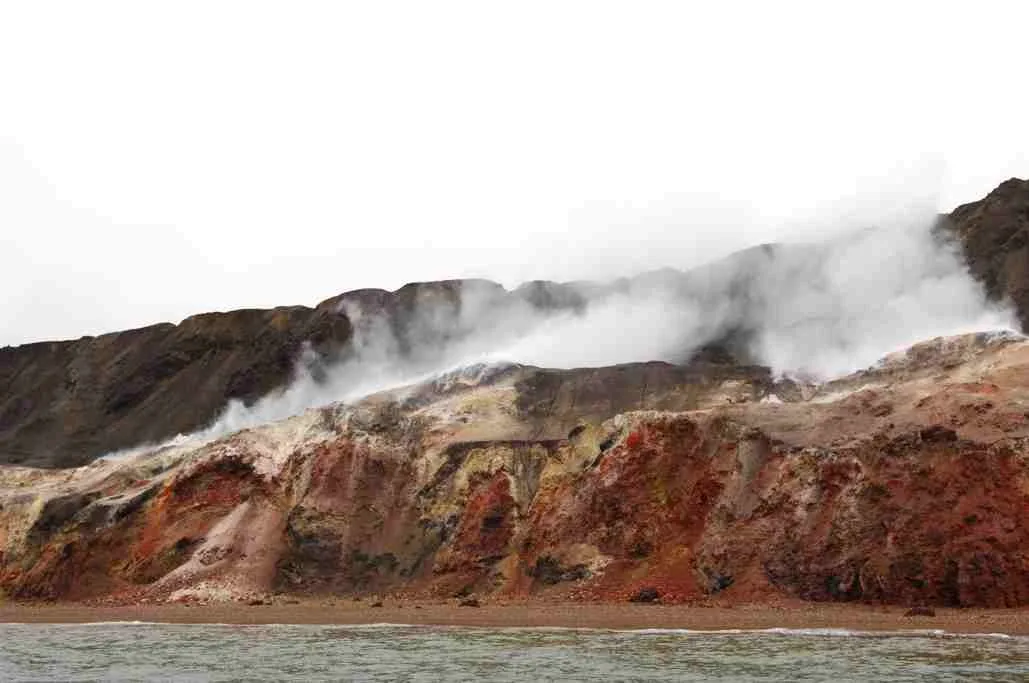
The place in Canada where the cliffs are always smoking
A search party thought they'd found the survivors of the Franklin Expedition. Instead, they encountered a hellish landscape.
It’s not hard to imagine the cheers the crew of Sir Robert John Le Mesurier McClure must have shouted out when, one day in 1850, they sighted plumes of smoke on the distant horizon.
They were the latest in what would become a long line of Arctic explorers seeking the doomed Franklin Expedition, cautiously navigating then still largely unknown waters of Arctic Ocean searching for any sign of the missing men, last seen five years earlier. Far away from home, it must have seemed that the search was not in vain after all, that they had happened upon the cookfires of some of Franklin’s survivors, clinging to life in one of the most hostile parts of the world.
But the landing party sent by McClure found no signs of Franklin’s crew at the site, near Cape Bathurst, mainland Canada’s northern-most point. Instead, they encountered a blasted landscape more stygian than hopeful. Thick plumes of foul-smelling smoke rose from bare rocks, some stained an eerie blood red.

Image: Wikimedia Commons/Angsar Walk.
Disappointed, but probably unnerved, the crew returned to McClure’s ship, HMS Investigator, with samples from the smoky rocks. According to some stories, one sample burned a hole in McClure’s desk.
Though McClure’s men didn’t find any Franklin survivors, the Smoking Hills did have a tangential connection to the missing explorers.
McClure’s encounter is often cited as the first glimpse of the hills, though the Canadian Encyclopedia says the hills were already burning in 1826 when John Richardson, a naturalist travelling with Franklin himself on one of his mainland Arctic explorations, mapped the nearby Horton River. It's possible Franklin himself may have seen them as well. And of course, they were already known to Indigenous people before Europeans penetrated the region, and likely have been burning for hundreds of years.

Image: Wikimedia Commons/Angsar Walk.
As sinister as it looks, the scientific explanation for the process is simple enough. According to the University of Guelph, the shale rocks in the area are laced with sulphur and coal. They react when they come into contact, igniting to give out those ominous columns of white smoke. A side effect of the process is sulphur dioxide, which the university says has acidified the surrounding landscape, making it look even more like another planet.
These hellish hills were named one of the Seven Wonders of the Northwest Territories by the CBC, but getting there can be a bit of an ordeal. It’s so remote, the nearest community, Paulatuk (whose name itself means “place of coal”) is more than 100 km away, and inaccessible by road. There are outfitter companies offering canoe trips up the Horton River (though at pretty steep prices, given the region’s remoteness), and of course you can sail there via the increasingly ice-free Arctic (check out this account by Canada C3, a 150-day sailing expedition covering all three of Canada’s coasts).







